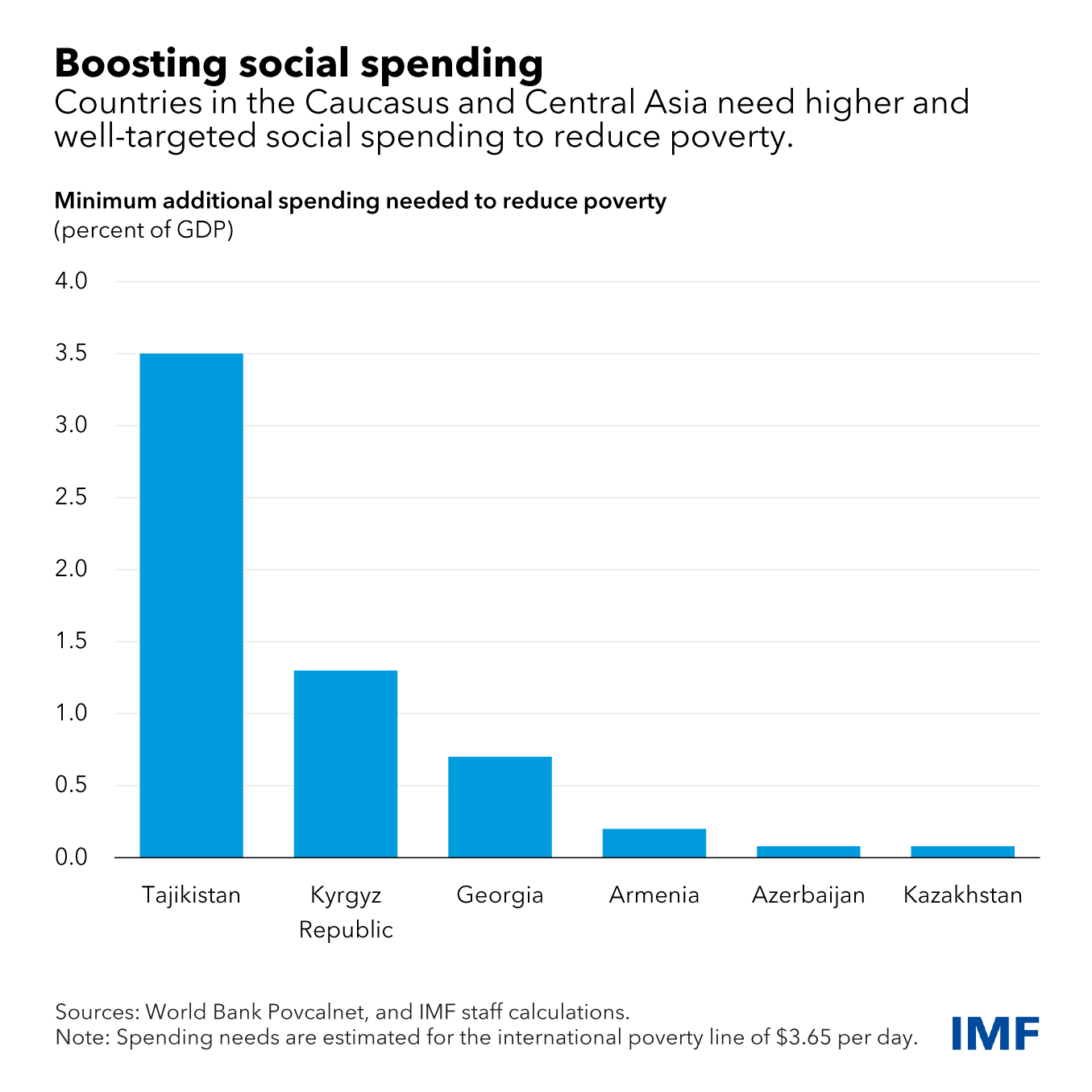How to Accelerate Economic Growth in the Caucasus and Central Asia
July 10, 2023
In the medium-term, reforms can increase output in the region by 5 to 7 percent
Since independence in the early 1990s, income levels and living standards in the Caucasus and Central Asia (CCA) have improved but remain well below the levels of emerging Europe. The state continues to play a dominant role in many CCA economies and transitions to market economies are still ongoing. The region is now facing risks from global fragmentation due to Russia’s war in Ukraine, which could distort trade and financial flows. Without higher and more inclusive growth, it could take decades for the region to catch up to income levels in emerging Europe—over six decades for Tajikistan and the Kyrgyz Republic, and nearly three decades for Uzbekistan and Turkmenistan.

To strengthen its economic resilience, generate more jobs and support human development, the region needs a new growth model that leads to more efficient resource allocation. The private sector should drive growth, while the state should provide a business-friendly environment, deliver essential public goods and services, invest in healthcare, education and infrastructure, and protect the vulnerable. This requires structural reforms to remove obstacles to growth.
Our research shows that structural reforms can lift output in the CCA by 5-7 percent in the next 4 to 6 years and considerably improve the well-being of the people. Governance reforms, including state-owned enterprise reforms, will yield the largest output gains for the region—nearly 6 percent. This is followed by labor market reforms, easing of external finance and trade restrictions, and liberalizing product and financial markets. Moreover, countries with better governance tend to derive greater growth dividends from other reforms. This suggests that governance reforms that impact all sectors of the economy can amplify the positive impact of other reforms and should be prioritized.

Finally, higher and well-targeted social spending could reduce poverty and improve living standards of the poor. For example, Tajikistan needs to spend an additional 3.5 percent of GDP each year on social safety nets to raise the median income of the poor to the international poverty line of $3.65 per day. Well-designed social safety nets will help protect the most vulnerable from the impact of the reforms needed to reduce the role of the state in the economy and adopt a new growth model.

****
Nick Gigineishvili is a deputy division chief in the Middle East and Central Asia Department.








